1110 Search Results for Core
December 20, 2014
by Carole Zangari -
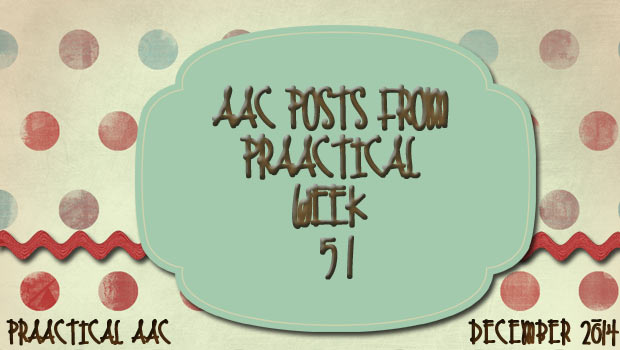
Sunday – Video of the Week: Core Literature Monday – AAC is My Voice Tuesday – Teach Me Tuesday: AvaTalker Wednesday – Watch It Wednesday: Living an Accessible Life Thursday – Hello Holidays: AAC Ideas for Your Celebration Friday – Got Holiday Cards? 5 PrAACtical Ideas
December 19, 2014
by Carole Zangari -
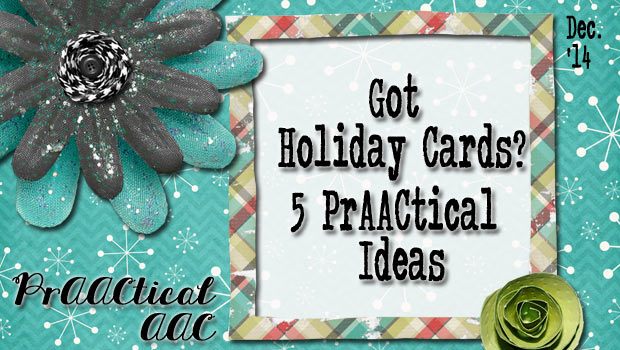
Whether it is electronically or by postal mail, many of our prAACtical friends are sending and receiving holiday greetings this week. Here are some thoughts on taking advantage of their novelty and using them to build language and literacy skills. Core Vocabulary: Lots of opportunity to practice using core words. Can I have it? I like it. It is fun. Give it to me. Do you want it? I want to see. We can do it (together). I can see it. Do you want to do more? Can you see the ___? WH Questions: Make it a game to pick a card to talk about. Everyone can have a turn asking and answering questions like these and get some core word practice in at the same time. Who gave it? Where are they? What do you think? Why do you like (not like) it? Stop and Go: Have a cute... [Read More...]
December 10, 2014
by Carole Zangari -
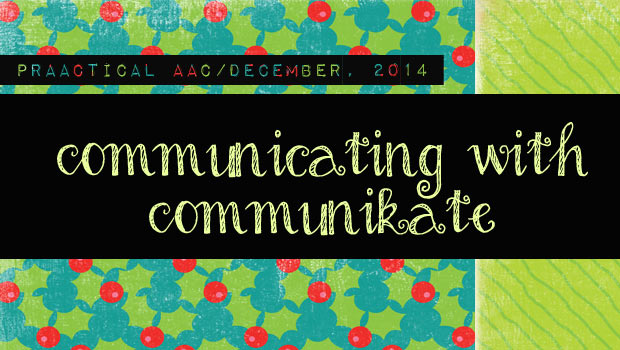
We’ve talked a lot about innovative communication displays and today we’re going to highlight a recently released one. I was delighted to hear about CommuniKate from Dr. Joe Reddington, who blogs at joereddington.com. Joe is a principal of White Water Writers, a project that trains teachers and youth leaders to run inspiration literacy camps, and works toward a world where all children can hold books they have written. He researches ethical issues around power and control in the context of communication disability, and produces open datasets for AT provision, among other things. In this post, Joe introduces us to CommuniKate. CommuniKate 20 is a socially focused page set designed exclusively for people who use augmentative and alternative communication (AAC). It was designed so that it could be easily used in conjunction with a low-tech communication book and as a progression from a book to a dynamic display device. It covers core vocabulary and... [Read More...]
November 22, 2014
by Carole Zangari -
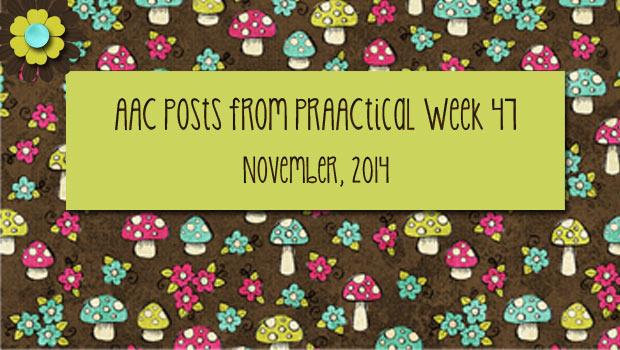
Sunday: Video of the Week – Aided Language Input in Conversation Tuesday: Teach Me Tuesday: Communicator Wednesday: Watch it Wednesday – I Am Able Thursday: Throwback Thursday: Teaching Core Vocabulary
November 6, 2014
by Carole Zangari -
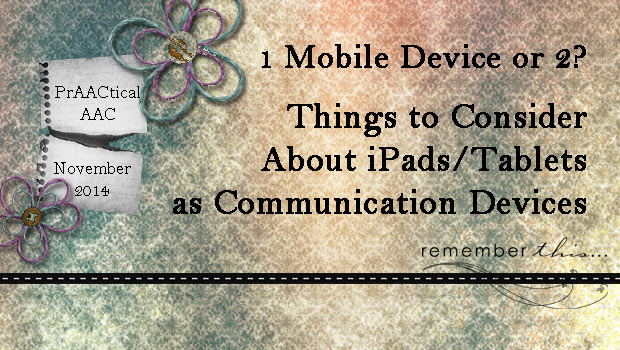
Should iPads and tablets be used both for communication and other things? That’s a question we hear rather frequently these days. Our answer will probably frustrate you. Ready? Here goes: It depends. It depends on the learner. Consider these two students. Tia is 6 and very much a beginning communicator. She has had her mobile device with a core language based AAC app for a few months. Tia uses it independently to ask for a few of her favorite things, like music and bubbles. With prompting she can use it to ask for a wider variety things, and can also use it for commenting, labeling, greeting, and answering ‘what’ questions. She does not yet combine two symbols to make short sentences. Yvette is 15 and has been using AAC since she was a toddler. She uses a text-to-speech app on her mobile device and knows how to program phrases and... [Read More...]
November 1, 2014
by Carole Zangari -
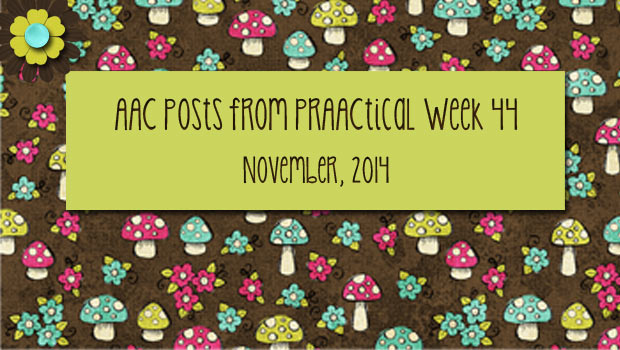
Sunday: Video of the Week – Core Vocabulary in Activity-based Intervention Tuesday: Teach Me Tuesday – Dynavox V/VMax Wednesday: Now It’s Your Turn Thursday: AAC Assessment Forms Friday: The Faces of AAC – Paula and Brian
October 17, 2014
by Carole Zangari -
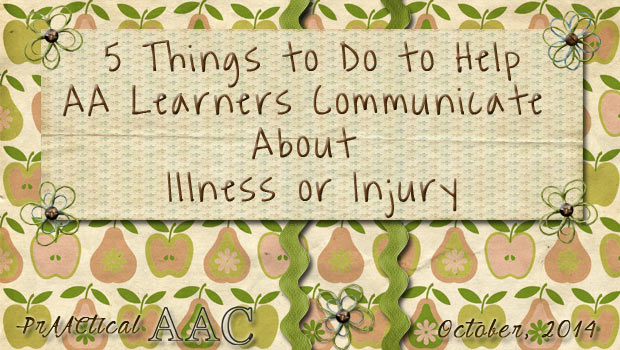
“I don’t want to go now. I’m tired.” “Can you be quiet? I don’t feel well.” “My ear is throbbing.” “I have a such a headache.” “Don’t take me in the car. My stomach’s upset.” Imagine not being able to manage these symptoms or even say these things to get someone to help you. Good SLPs get input from families during the goal-setting process. Often, families indicate that they want their son/daughter to be able to let them know when they are sick or in pain. This makes sense, of course, but it isn’t an easy skill set to build. Here are some things that have worked for us. Make sure the right vocabulary is there: Body parts, feelings, words related to injury or illness, modifiers to tell how much, locatives to tell where. How can we expect AAC learners to communicate when they are unwell if we don’t provide... [Read More...]
October 16, 2014
by Carole Zangari -
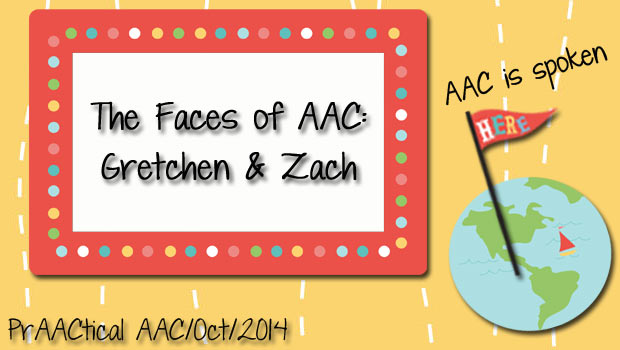
From Bielsko, Poland, to Denver, USA, we are continuing to share the Faces of AAC. Today, we meet SLP Gretchen Storm, who works in the public school system and has a private practice. Gretchen enjoys collaborating with parents, children, teachers, other healthcare providers, siblings and peers in strategies and facilitating communication through speech generating devices. In this post, Gretchen introduces us to Zach. :::::::::::::::::::::::::::::::::::::::::::::::::::::::::: Zach is an 11 year old who uses a Tobii I-12 eye gaze communication device to communicate. He previously used a switch scanning method on a VMax from Dynavox. Zach recently switched to an eye gaze device. Though he loves to use his arms and hands whenever possible, his motor control of them is not ideal for the consistent switch access needed for switch scanning. He was switched to an eye gaze system which could also serve as a switch scanning device if in the future he demonstrates improved... [Read More...]
September 9, 2014
by Carole Zangari -
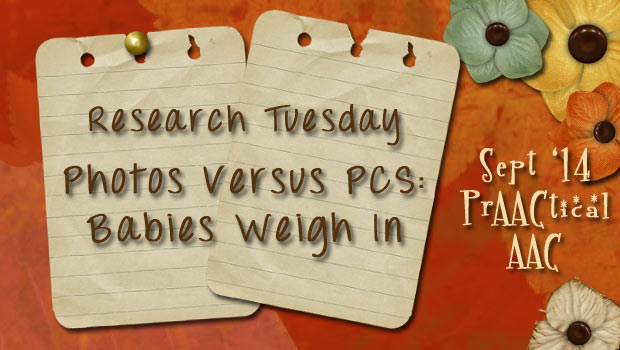
We’re back again with another Research Tuesday post, a series organized by Rachel Wynn of Gray Matter Therapy, in which bloggers are encouraged to write about a research article that they’ve read recently. (You may also know Rachel from her amazing work in advocating for ethical services in skilled nursing facilities.) For our September post, we look at a study done with babies to see how they like different AAC symbols. SLPs frequently assume that children with AAC needs better understand and prefer photos to other forms of picture symbols used in AAC. In this article, we look at the work of special educator Alexandra DaFonte whose work gives us some insight into this issue. In this study, she sought to determine if typically developing infants at 6, 9, and 12 months of age responded to two types of graphic symbols used in AAC: actual photographs and Picture Communication Symbols... [Read More...]
September 4, 2014
by Carole Zangari -
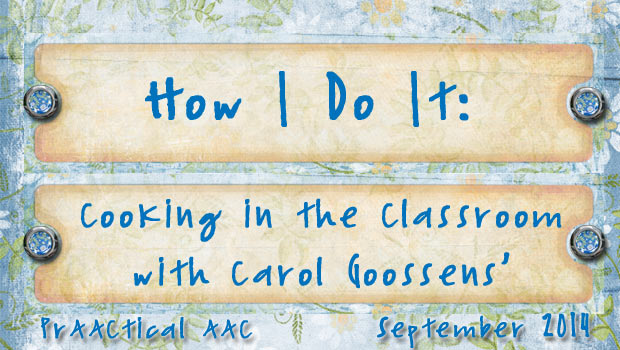
There is something about fall that puts us in the mood for cooking. Today, we are honored to learn from an AAC pioneer, Dr. Carol Goossens,’ who is an SLP and special educator based in the New York City area. She has consulted extensively in a variety of classrooms serving the full spectrum of children with special needs. Carol has presented both nationally and internationally about her collaborative work with teachers, therapists and families. She is known for her ability to seamlessly integrate technology in the classroom and for developing innovative ways to help children learn …while having fun doing it! In this post, she shares one of her latest projects, making animated recipes for using in cooking activities in the classroom. Cooking appears to be motivating for most children … the magic of putting together ingredients that ultimately become something delicious to eat. Teachers, speech-language pathologists (SLPs) and occupational therapists (OTs) often use food preparation activities... [Read More...]









